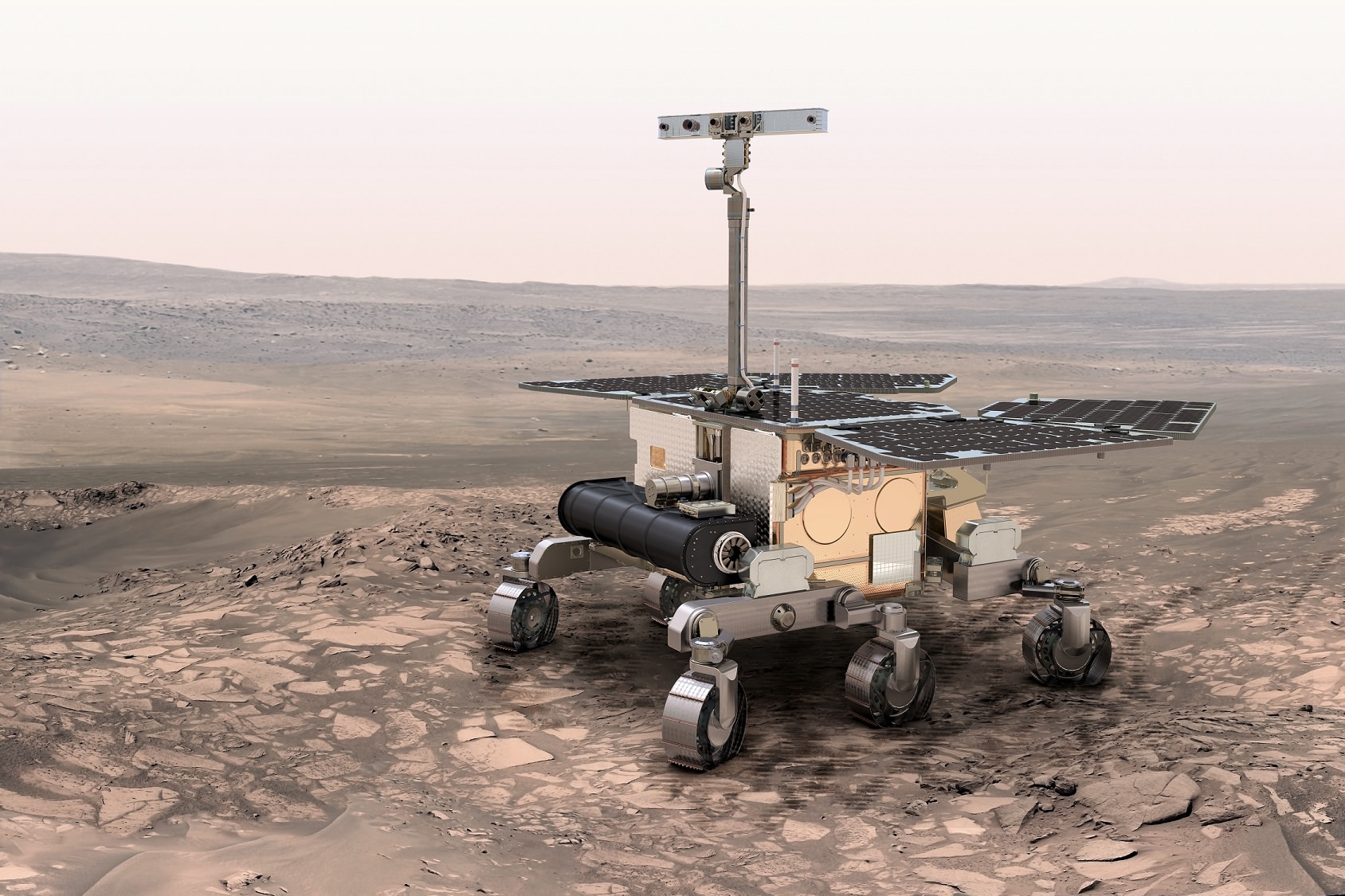Scientists, start your engines. The next few weeks will see a flurry of proposals come for the European Space Agency’s first rover mission on the Red Planet in 2018.
The ExoMars mission will see a lander and rover touch Mars, and what’s neat about this particular mission is the rover has a drill on board that can burrow as far down as 6 feet (2 meters) — a first on that planet. This means the mission would be well-suited to look for organic molecules, especially in light of the stunning findings Mars Curiosity scientists recently presented about a possibly life-friendly ancient lake on Mars.
Here, in ESA’s words, are what the site must accomplish:
- The site must be ancient (older than 3.6 Ga)—from Mars’ early, habitable period: Pre- to late-Noachian (Phyllosian), possibly extending into the Hesperian;
- The site must show abundant morphological and mineralogical evidence for long-duration, or frequently reoccurring, aqueous activity;
- The site must include numerous sedimentary rock outcrops;
- The outcrops must be distributed over the landing ellipse to ensure that the rover can get to some of them (typical rover traverse range is a few km);
- The site must have little dust coverage.
If you’re well-versed in Red Planet geology, we’d love to hear your idea for possible sites. Feel free to leave your thoughts in the comments. For more information about the mission requirements, you can check out the ESA page, which details what proposals must contain.


ExoMars sounds like a me-too mission, duplicating the Curiosity effort, with its requirement for ancient sedimentary outcrops and aqueous activity.
I’m beginning to shift my hopes to China’s (robotic) space program which is at least doing something different.
For heaven’s sake, if it has to be Mars, at least be original.
An alternative hypothesis suggests that Mars is a retarded super-Earth formed by hybrid core accretion (Currie 2005) (of circa 100 km Dia trans-Neptunian-(type) objects (TNOs) in which the TNOs formed by gravitational instability (GI).
As GI ‘condensed’ objects gravitationally collapse, they may typically fragment (bifurcate) due to excess angular momentum, forming binary TNOs, like the binary TNOs of the cold classical Kuiper belt. (Nesvorny et al. 2010)
When perturbed, binary planetesimals (binary comets and binary TNOs) may spiral in until they merge, initiating aqueous differentiation, forming salt-water oceans in their cores. Mineral grains will precipitate where dissolved species reach solubility saturation and continue to grow through crystallization until falling out of solution due to negative buoyancy in the micro gravity of salt-water oceans, forming a sedimentary core.
Subsequent diagenesis and lithification may convert the sedimentary core to rock surrounded by a hydrothermal rocky mantle. Thus Mars may be composed of differentiated TNO cores, known on Earth as mantled gneiss domes. Where impacts or water activity has exposed the underlying composition and wind action keeps sweeps the terrain free of sand dunes, Mars’ underlying skeleton of gneiss domes may be revealed, such as in the twisted terrain of Hellas Planitia:
http://hirise.lpl.arizona.edu/images/wallpaper/2048/PSP_008559_1405.jpg
https://farm4.static.flickr.com/3179/2857930291_3e12f007ac_o.jpg
Nesvorny, David, Youdin, Andrew N., Richardson, Derek C., (2010), Formation of Kuiper Belt Binaries by Gravitational Collapse, The Astronomical Journal 140 (2010) 785, doi:10.1088/0004-6256/140/3/785
Currie, Thayne, (2005), Hybrid Mechanisms for Gas/Ice Giant Planet Formation, The Astrophysical Journal, 629:549-555, 2005 August 10
No doubt about it.. without hesitation I would suggest Hellas Planetia. WHY has the ESA withheld data collected by the Mars Express mission? I note here this year’s release of radar altimetry and soundings that show all of Mars but do not show anything in Hellas Planetia… Look it up?
Bet they saw evidence of hot springs….?
Think.. deep lava pipeszuh… ?
There are numerous caves on Mars, some of them long tubes just below the surface, formed by ancient volcanic activity, as on the The Big Island of Hawaii. They should be exploring those caves and taking ice samples from them, as extremophiles on earth live in solid ice. Don’t know why they’re rolling around on the surface of Mars, as nothing can survive up there due to the radiation.
Hellas. No question about it. Hellas.
How would you communicate with a rover inside a cave? …
Why can’t it drop micro receivers along the way to daisy chain a signal back to a “base station rover” sitting outside of the cave, which we talk to from earth. A detachable rover that carries a bunch of little battery powered relay’s…and it will pick them back up on the way out to charge them for the next cave 🙂
Isn’t Mawrth Vallis the prime landing site candidate for ExoMars anymore? No doubt, we will find most answers there and all of the features demanded as of the list above is accomplished there. The Exomars team(s) would be stupid not to land there – don’t repeat NASA’s mistake in landing site selection with choosing a deep blast area over Mawrth Vallis.